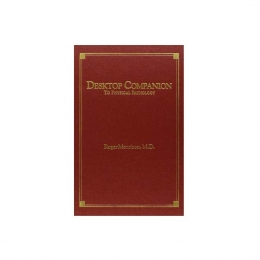Desktop Companion to Physical Pathology - Roger Morrison, 1998
Excerpt from Introduction: As with my first book, Desktop Guide to Keynotes and Confirmatory Symptoms, I have embarked upon the writing of this text because I wanted it for my own practice. I have tried to create a concise yet thorough differential for each of the main pathologies encountered in homeopathic practice. It is my hope that the present book will serve as a companion to my earlier book.
My main concern throughout the writing of this books has been that its purpose and the information it contains would be misconstrued and misused. Homeopathy is an art and a science which must always aim to cure the patient on the deepest level. In this aim, often it is the deepest inner conflicts and frustrations of our patient which lead us to the correct remedy. The practitioner must always consider the whole person. In fact, many cases the constitutional remedy cures a pathology for which it is not listed in our materia medica. Since this is so, what is the purpose of writing a therapeutic text which by its name emphasizes the physical symptoms and keynotes?
I wish therefore, to be clear about my intentions in putting forth this material. The purpose of this book is threefold: It is meant first as an aid to be used at the time of patient interview (either by phone or in person) to cue the practitioner toward likely remedies for a particular condition. The second purpose is as a study guide, bringing the main points of the remedies into focus. And, finally, to give advice about treatment based on the experience of myself and my colleagues at our center.
605 pages, hard cover





